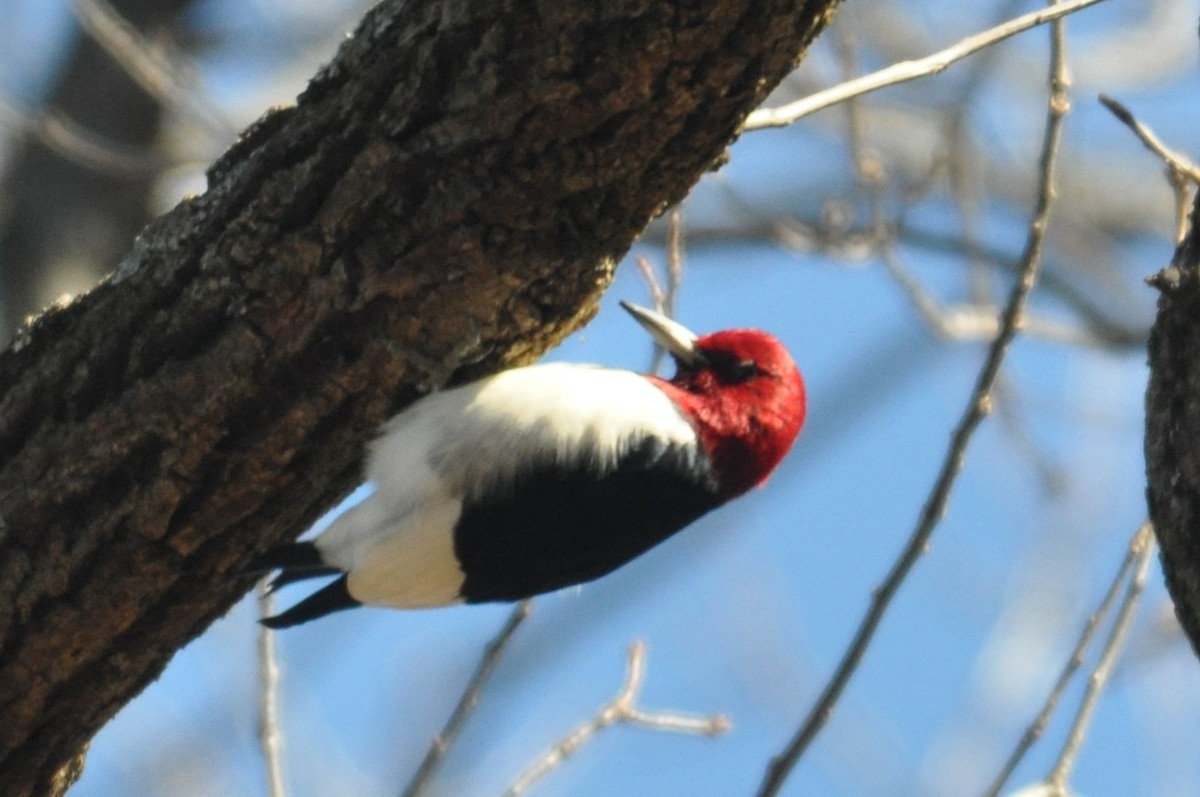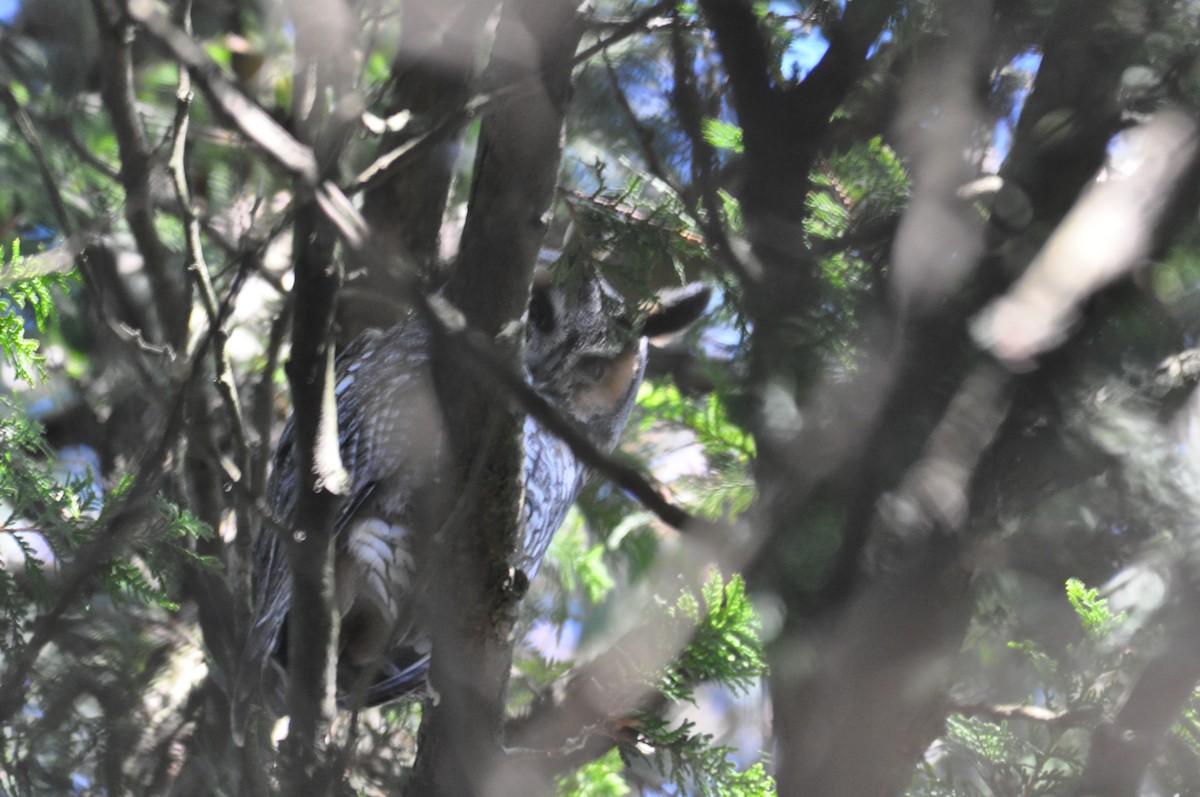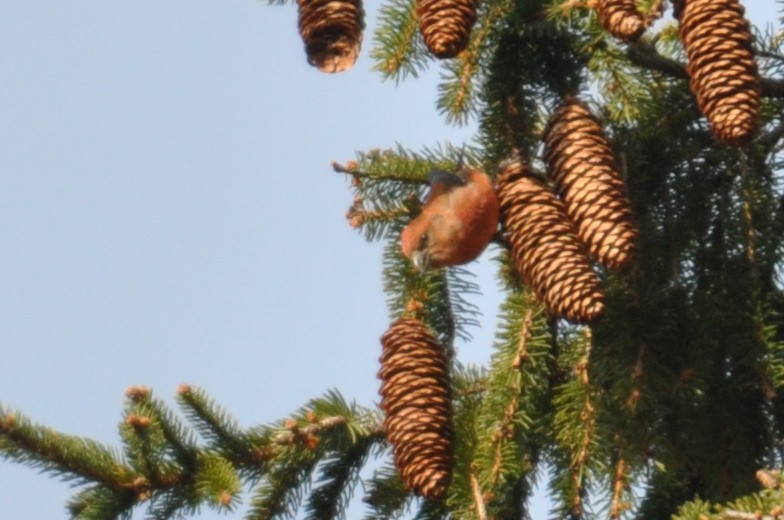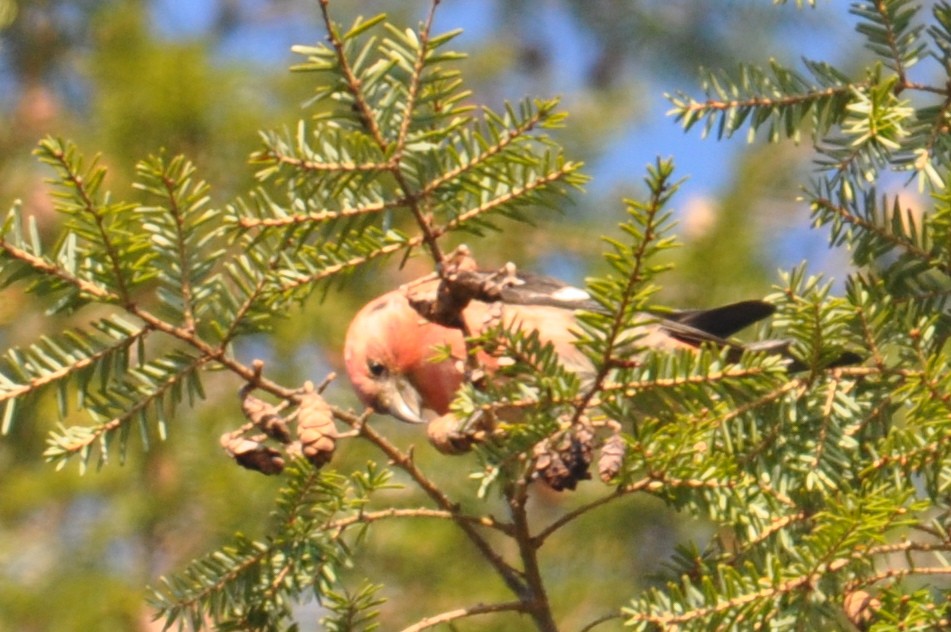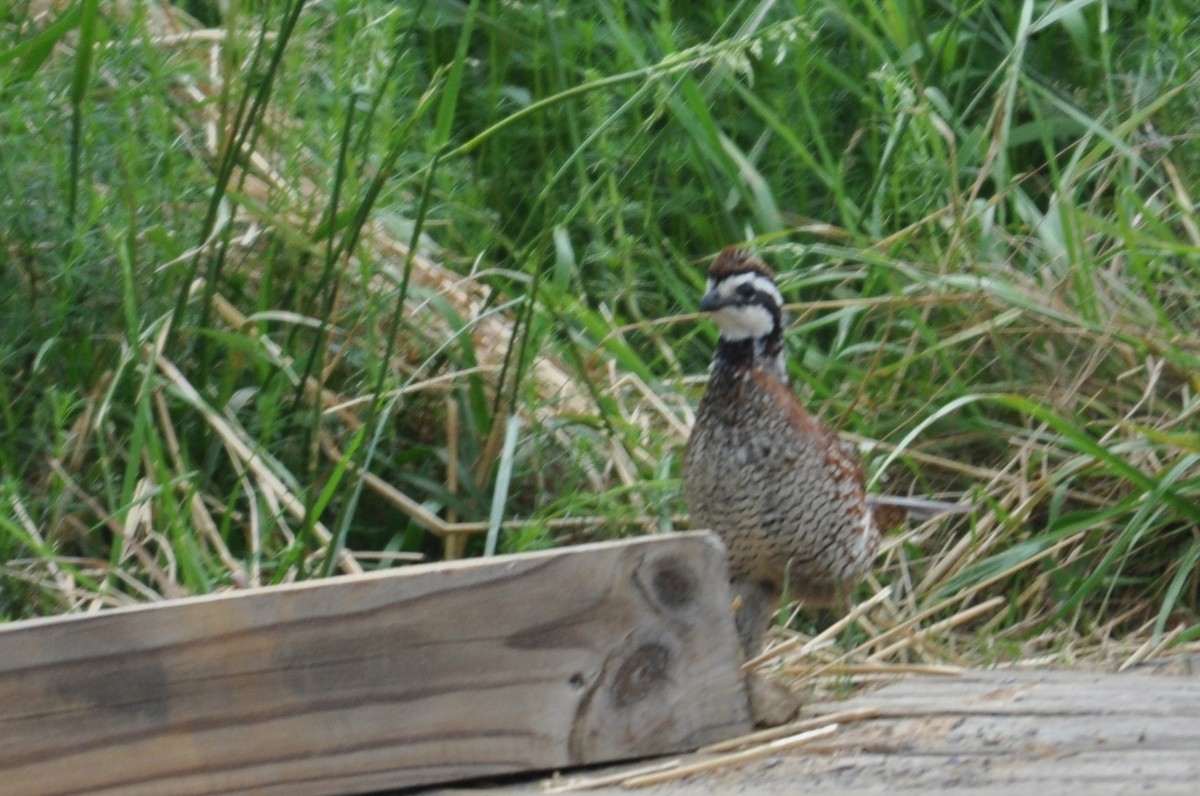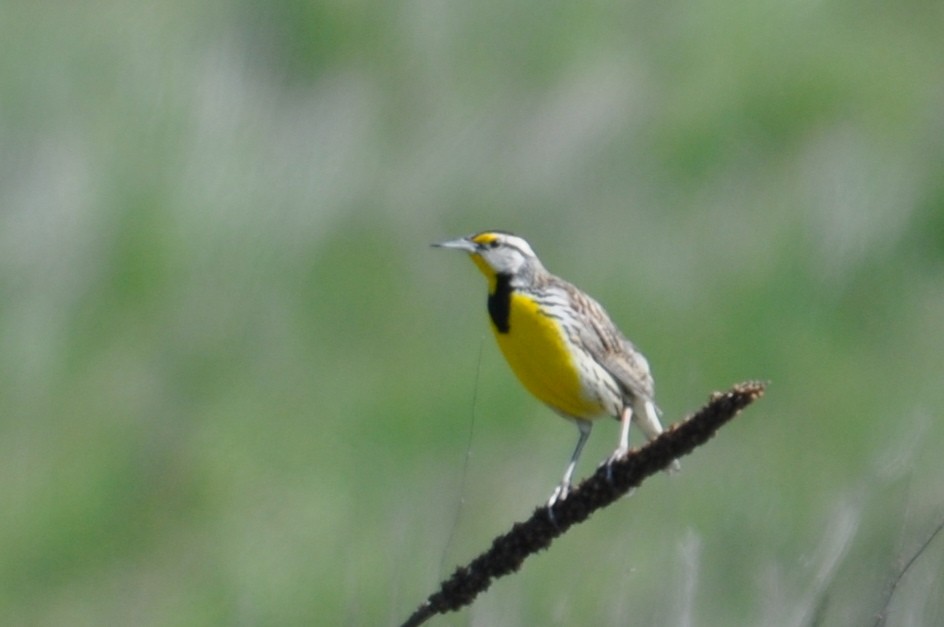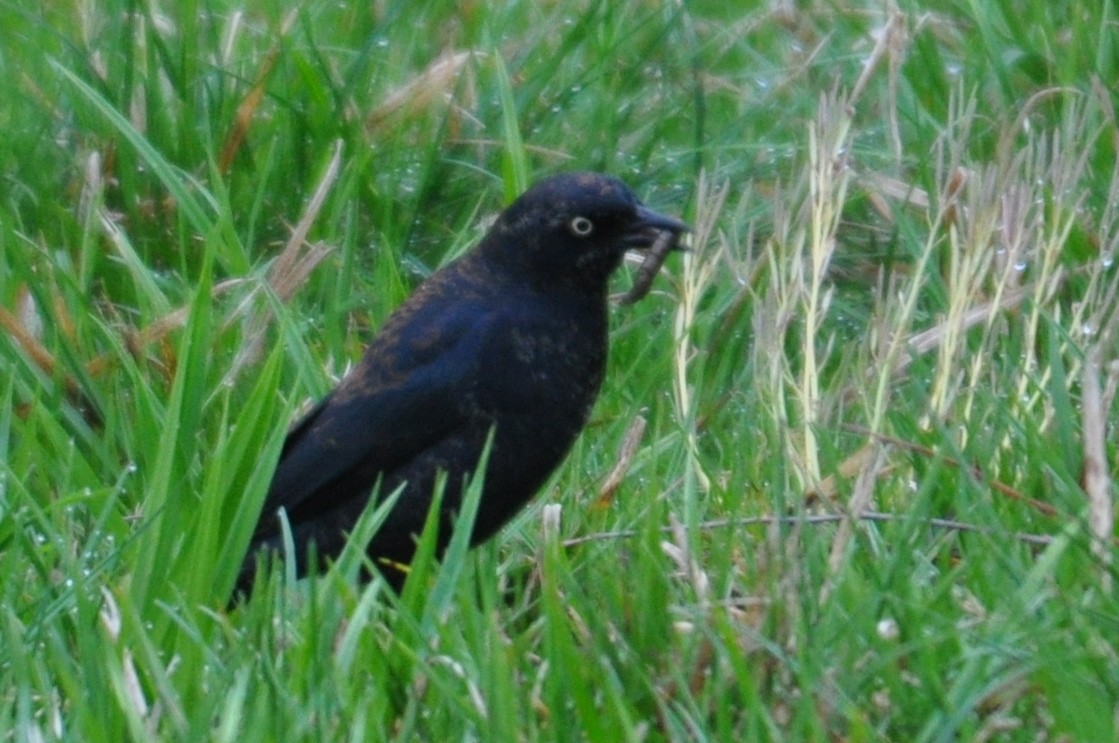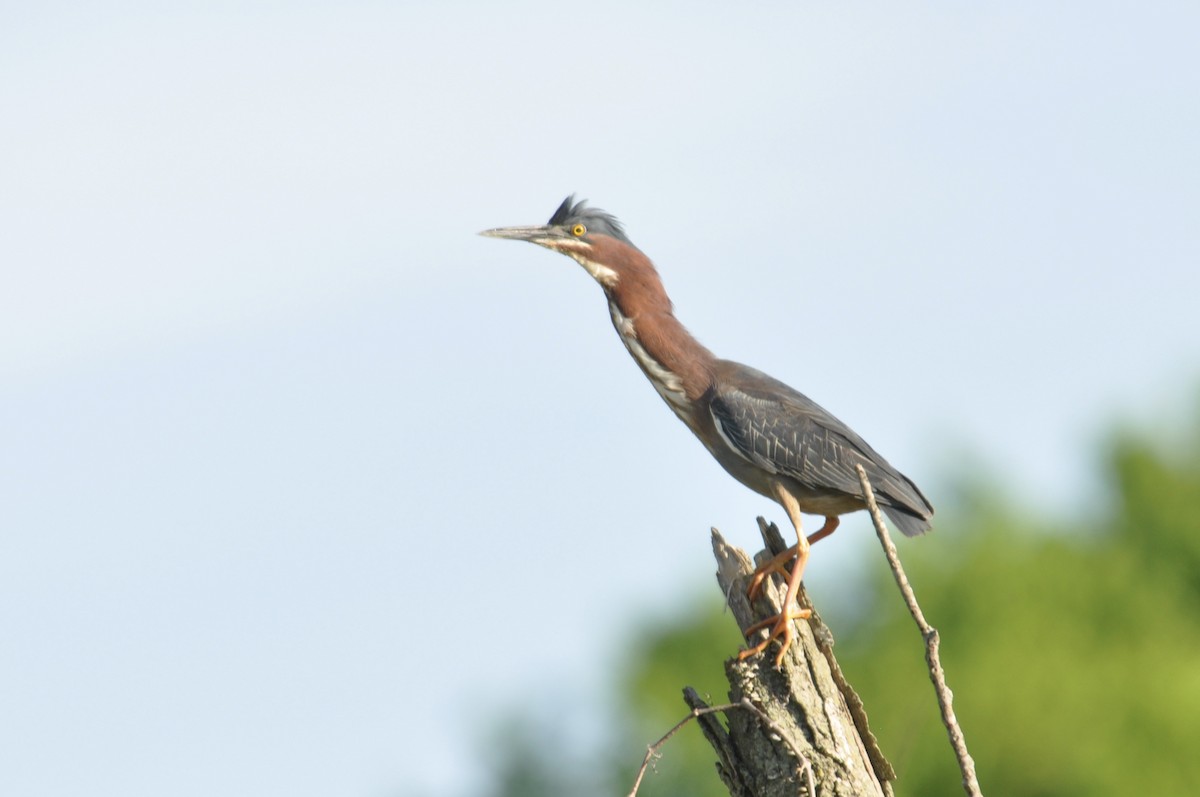Most birders start at "The Quarters", which you will see to the south if you enter from the main entrance. There are feeders outside the Pittfield Learning Center and in the conifer grove behind the Quarters which often attract Pine Siskin, Red-breasted Nuthatch and Black-capped Chickadees during irruption years. Much more rarely the conifer grove has hosted Crossbills, White-winged Crossbills have been recorded at least three different winters and Red Crossbills have been present at least one winter. The scrubby area around Lake Georgette just to the south of the grove is also worth checking, it can host a variety of passerines. If you head east across the field from here you will come to the Native Plant Trail, which circles Rattlesnake Spring. This field is excellent for sparrows in migration and winter, it it one of the most reliable spots to find American Tree Sparrow in the area and is also one of the few remaining places in the area where Northern Bobwhite can be found. Rattlesnake Spring itself has hosted several notable birds such as American Bittern, Virginia Rail, and Sora. Across Blandy Farm Lane from Rattlesnake Spring there is a large seasonal pond known as Lake Arnold. Some years this pond will be almost completely dry, but other years it will be full enough to attract a variety of ducks, herons and shorebirds. Notable sightings here over the years include Glossy Ibis, Black Tern, Long-billed Dowitcher, and Red-necked Phalarope. It is also home to a large Purple Martin colony.
Taking the Loop drive that starts just east of the main parking area will take you to several more spots worth visiting. The north fields around the community garden are another fantastic spot for sparrows in the winter, and are another good spot to find Bobwhite. Loggerhead Shrike and Rough-legged Hawk have also spent the winter here some years. Formerly Willow Flycatchers bred in the scrubby area to the east of this field but they have become more difficult to track down in recent years. If you park next to the large brush pile at the northeast corner of the loop you can walk some of the bridle trails in the treeline along the east end of the property, this area can also be good for migrant passerines. The fenced-off Chestnut Grove and the fields to the east of it along the south side of the loop are another good spot for sparrows, Vesper Sparrow is found most often in this area. The farm fields to the south often host Horned Larks and American Pipits in the winter and there are usually a few American Kestrels cruising the fields. The last spot worth visiting is the bridle trails south of the Ginkgo Grove off Tuleyries Ln. Walking these trails as well as the portion of Tuleyries Ln that passes through the southwest woodlot is often very productive for finding migrant warblers and thrushes in the spring and fall. Notable migrants found in this area include Black-billed Cuckoo, Yellow-bellied Flycatcher, Philadelphia Vireo, and Wilson's Warbler.
Accessibility: The main entrance is Blandy Farm Lane off US 50 just east of Waterloo. Additionally there are two back entrances: Tuleyries Ln and Blandy Farm Ln off Berrys Ferry Road (Rt. 628) on the south side of the property. Hours are from dawn to dusk and there is no entry fee.
Owner/Manager: University of Virginia
eBird Hotspot: Blandy Experimental Farm/State Arboretum of Virginia
Sub-Hotspots: Blandy Farm--Lake Arnold, Blandy Farm--Pavilion
—James Fox

